
USS De Haven (DD-469) was a Fletcher-class destroyer of the United States Navy, the first Navy ship named for Lieutenant Edwin J. De Haven USN (1819–1865). De Haven was the first Fletcher-class ship lost in World War II, having been in commission only 133 days.
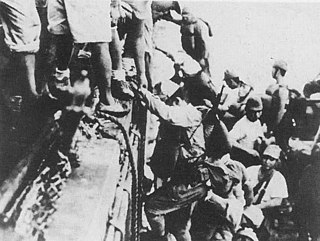
The Tokyo Express was the name given by Allied forces to the use of Imperial Japanese Navy ships at night to deliver personnel, supplies, and equipment to Japanese forces operating in and around New Guinea and the Solomon Islands during the Pacific campaign of World War II. The operation involved loading personnel or supplies aboard fast warships, later submarines, and using the warships' speed to deliver the personnel or supplies to the desired location and return to the originating base all within one night so Allied aircraft could not intercept them by day.

USS Fletcher (DD/DDE-445), named for Admiral Frank Friday Fletcher, was the lead Fletcher-class destroyer, and served in the Pacific during World War II. She received fifteen battle stars for World War II service, and five for Korean War service.

The USS San Diego (CL-53) was an Atlanta-class light cruiser of the United States Navy, commissioned just after the US entry into World War II, and active throughout the Pacific theater. Armed with 16 5 in (127 mm)/38 cal DP anti-aircraft guns and 16 Bofors 40 mm AA guns, the Atlanta-class cruisers had one of the heaviest anti-aircraft broadsides of any warship of World War II.
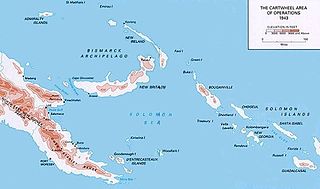
Operation Cartwheel was a major military operation for the Allies in the Pacific theatre of World War II. Cartwheel was an operation aimed at neutralising the major Japanese base at Rabaul. The operation was directed by the Supreme Allied Commander in the South West Pacific Area (SWPA), General Douglas MacArthur, whose forces had advanced along the northeast coast of New Guinea and occupied nearby islands. Allied forces from the South Pacific Area, under Admiral William Halsey, advanced through the Solomon Islands toward Bougainville. The Allied forces involved were from Australia, the Netherlands, New Zealand, the US, and various Pacific Islands.

USS Helm (DD-388) was a Bagley-class destroyer in the United States Navy during World War II. She was named for Rear Admiral James Meredith Helm. Helm received 11 battle stars for her World War II service in the Pacific.

The Aleutian Islands campaign was a military campaign fought between 3 June 1942 and 15 August 1943 on and around the Aleutian Islands in the American Theater of World War II during the Pacific War. It was the only military campaign of World War II fought on North American soil.

The New Georgia campaign was a series of land and naval battles of the Pacific Theater of World War II between Allied forces and the Empire of Japan. It was part of Operation Cartwheel, the Allied strategy in the South Pacific to isolate the Japanese base around Rabaul. The campaign took place in the New Georgia Islands in the central Solomon Islands and followed the Allied capture of the Russell Islands. The main fighting took place on New Georgia itself, although significant actions also took place around the island chain throughout the campaign.
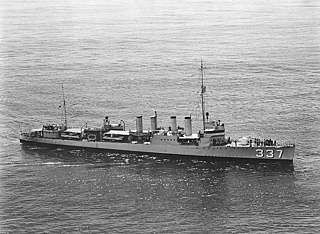
USS Zane (DD-337/DMS-14/AG-109) was a Clemson-class destroyer in the United States Navy following World War I. She was named for Randolph Zane.

USS Trever (DD-339/DMS-16/AG-110) was a Clemson-class destroyer of the United States Navy in commission from 1922 to 1923 and from 1930 to 1945. Converted to a destroyer minesweeper in 1940, she served in the Pacific throughout World War II, including during the Japanese attack on Pearl Harbor, the Guadalcanal campaign, and the New Georgia campaign.
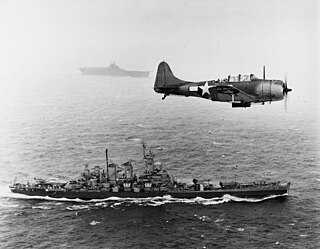
The Gilbert and Marshall Islands campaign were a series of battles fought from August 1942 through February 1944, in the Pacific theatre of World War II between the United States and Japan. They were the first steps of the drive across the Central Pacific by the United States Pacific Fleet and Marine Corps. The purpose was to establish airfields and naval bases that would allow air and naval support for upcoming operations across the Central Pacific. Operation Galvanic and Operation Kourbash were the code names for the Gilberts campaign that included the seizures of Tarawa and Makin, during the Battle of Tarawa on 20–23 November 1943 and the Battle of Makin on 20–24 November 1943. Operation Flintlock and Operation Catchpole were aimed at capturing Japanese bases at Kwajalein, Eniwetok, and Majuro in the Marshall Islands.

The second USS Maury (DD-401) was a Gridley-class destroyer in the United States Navy. She was named for Matthew Maury, and was one of the most decorated US Naval vessels of World War II.

USS Russell (DD-414) was a World War II-era Sims-class destroyer in the service of the United States Navy, named after Rear Admiral John Henry Russell. She was among the most decorated US Naval vessels of World War II.
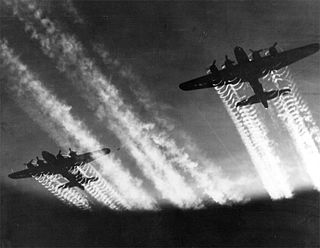
The military history of the United States during World War II covers the nation's role as one of the major Allies in their victory over the Axis Powers. The United States is generally considered to have entered the conflict with the 7 December 1941 surprise attack on Pearl Harbor by the Empire of Japan and exited it with the 2 September 1945 surrender of Japan. During the first two years of World War II, the US maintained formal neutrality, which was officially announced in the Quarantine Speech delivered by US President Franklin D. Roosevelt in 1937. While officially neutral, the US supplied Britain, the Soviet Union, and China with war materiel through the Lend-Lease Act signed into law on 11 March 1941, and deployed the US military to replace the British forces stationed in Iceland. Following the 4 September 1941 Greer incident involving a German submarine, Roosevelt publicly confirmed a "shoot on sight" order on 11 September, effectively declaring naval war on Germany and Italy in the Battle of the Atlantic. In the Pacific Theater, there was unofficial early US combat activity such as the Flying Tigers.
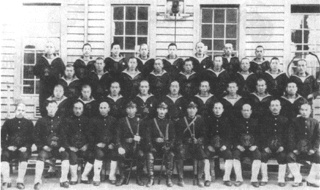
The invasion of Tulagi, on 3–4 May 1942, was part of Operation Mo, the Empire of Japan's strategy in the South Pacific and South West Pacific Area in 1942. The plan called for Imperial Japanese Navy troops to capture Tulagi and nearby islands in the British Solomon Islands Protectorate. The occupation of Tulagi by the Japanese was intended to cover the flank of and provide reconnaissance support for Japanese forces that were advancing on Port Moresby in New Guinea, provide greater defensive depth for the major Japanese base at Rabaul, and serve as a base for Japanese forces to threaten and interdict the supply and communication routes between the United States and Australia and New Zealand.

Chitose (千歳) was a warship of the Imperial Japanese Navy that served from 1938 to 1944, seeing service as a seaplane carrier and later as a light aircraft carrier during World War II. In her initial guise as a seaplane carrier, she first saw service during the Second Sino-Japanese War in 1938, and subsequently played a key role in the Imperial Japanese Navy's development of a network of seaplane bases on the islands of the Pacific Ocean. After the outbreak of World War II in the Pacific, she took part in the Philippines campaign, the Dutch East Indies campaign, the Battle of Midway, and the Guadalcanal campaign, during which she was damaged in the Battle of the Eastern Solomons and also saw service related to the Battle of Cape Esperance.

USS Heywood (APA-6) was a Heywood-class attack transport acquired by the U.S. Navy for service as a troop carrier during World War II. She served in the Pacific War, a very dangerous area in the early years of the war, and safely returned home post-war with seven battle stars to her credit.
Naval historians such as Evan Mawdsley, Richard Overy, and Craig Symonds concluded that World War II's decisive victories on land could not have been won without decisive victories at sea. Naval battles to keep shipping lanes open for combatant's movement of troops, guns, ammunition, tanks, warships, aircraft, raw materials, and food largely determined the outcome of land battles. Without the Allied victory in keeping shipping lanes open during the Battle of the Atlantic, Britain could not have fed her people or withstood Axis offensives in Europe and North Africa. Without Britain's survival and without Allied shipments of food and industrial equipment to the Soviet Union, her military and economic power would likely not have rebounded in time for Russian soldiers to prevail at Stalingrad and Kursk.
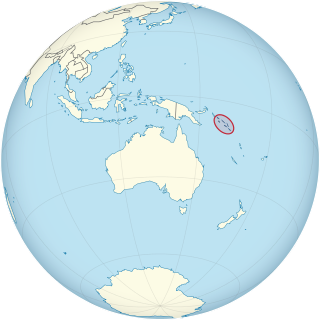
US Naval Base Solomons was a number of United States Navy bases in the Solomon Islands in the Pacific Ocean. Most were built by the US Navy Seabees, Naval Construction Battalions, during World War II as part of the Pacific War. In August 1942 the United States Armed Forces took the Guadalcanal in the Solomon, in the Battle of Guadalcanal. US Navy Seabees built a new base at Guadalcanal, Naval Base Guadalcanal and then on other islands in the Solomons.


















